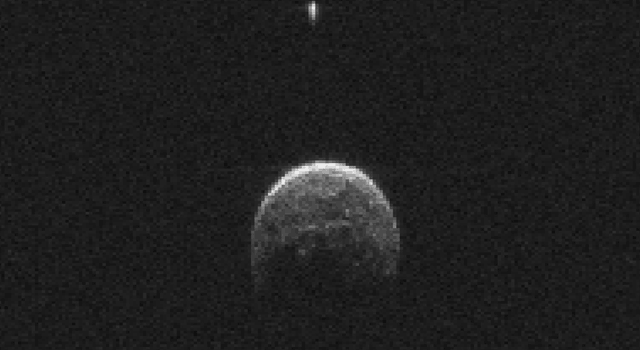2004-BL86 and its newly discovered moon. Image via NASA/JPL-Caltech
Asteroid 2004 BL86 finally passed by Earth last night, but NASA researchers focusing their high-powered cameras on the object made a startling discovery – it has its own moon.
The scientists had been using NASA’s 70m Deep Space Network antenna at Goldstone, California which collected 20 fascinating radar images of the two objects at a distance of 1.2m km from Earth, or the equivalent distance of 3.1 times the distance from the Earth to the moon.
The discovery of the small moon measured at a size of 70m across that followed the 325m-wide asteroid came as a complete surprise to the scientists who had not originally seen the small object as it made its way past our planet.
Their decision to use radar imaging for such an object is well-founded given that, compared with standard imagery, radar is capable of studying an asteroid’s size, shape, rotational state, surface features and surface roughness and is also used for improving the calculation of asteroid orbits.
When the asteroid was first seen back January 2004, it came as part of NASA’s expansive project of tracking near-Earth objects (NEO) given the potential extension event that could occur if one of these large asteroids actually hits our planet.
Next year, the NASA programme aims to launch and land a robotic probe on one of the most concerning asteroids – 101955 Bennu – in a mission to be designated OSIRIS-Rex to see whether future craft could be sent to potentially harmful asteroids.

GIF via NASA/JPL-Caltech